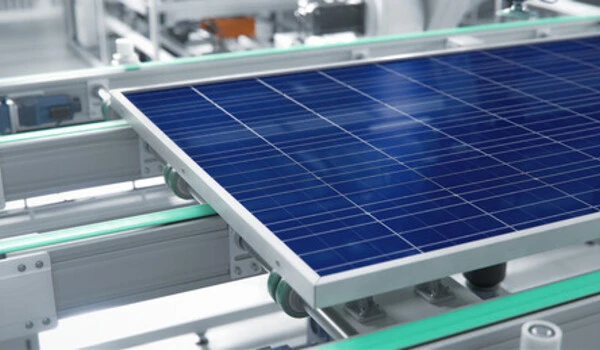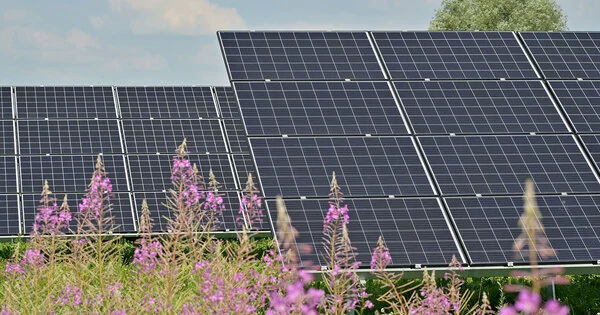Researchers have used microwaves to make the manufacturing process for solar cells faster and more efficient. By using microwaves to heat up the silicon material used in solar cells, they were able to reduce the amount of time it takes to produce a solar cell from 30 minutes to just a few seconds. This process also reduces energy consumption and eliminates the need for toxic chemicals in the production process.
Solar-cell production and recycling are being advanced by new technology. New microwave technology will improve solar cell manufacturing and make them easier to recycle. A microwave technology developed at Macquarie University will improve solar cell manufacturing and make them easier to recycle.
Several high-temperature processes known as annealing are used during the fabrication of solar panels. The cells are currently being cooked in an oven. However, a team led by senior lecturer Dr Binesh Puthen Veettil of the School of Engineering has demonstrated that heating with microwave radiation is nearly as efficient in a paper published in the US Journal of Applied Physics Letters. It also saves time and energy, and has other advantages.
Because microwave radiation selectively heats silicon, it leads to almost instantaneous effects with massive savings of energy. This is partly because the rest of the laminated panel of glass, plastic, and aluminium is left largely unaffected. And that property that has led to an unexpected recycling benefit for which the group has a patent pending.
It made economic sense to just dump the panels in the landfill. In the rare cases where they are recycled, you crush the panels, heat them to around 1400°C, and wash them with chemicals to remove the plastic – a time-consuming and energy-intensive process.
Dr. Veettil
Recycling benefits
The plastic (ethylene vinyl acetate) coating that protects the silicon plate from moisture and contamination softens to the point where it can be mechanically peeled off during microwave treatment. That means the plate can be easily delaminated and reused without the use of harsh chemicals.
“Until now, it made economic sense to just dump the panels in the landfill,” Dr. Veettil says. “In the rare cases where they are recycled, you crush the panels, heat them to around 1400°C, and wash them with chemicals to remove the plastic – a time-consuming and energy-intensive process. However, as solar panels, which began to be installed in large numbers about 20-30 years ago, reach the end of their useful life and are decommissioned, governments are demanding that they be recycled.”

Selective annealing
There are several other advantages to microwave annealing. Because microwave radiation can be focused, the heating it causes can be selective and highly tuned. Some of the newer panels, for example, use heterojunction technology, which interleaves crystalline and amorphous silicon. Faster, more precise annealing is highly advantageous in these cells.
Because precise focusing allows annealing to be directed to specific parts of the solar panel, it is ideal for annealing solar panels with more intricate internal structures fabricated for special purposes. In addition, unlike an oven, where various chemical substances are shed from the walls, microwave annealing occurs in a clean environment. “Therefore, there is less contamination,” explains Dr. Veettil. “And the entire procedure can be carried out at room temperature.”
New materials
Macquarie University is also working on several other projects involving solar cells and sustainable energy. Associate Professor Shujuan Huang, one of the paper’s co-authors, leads a group studying microwave annealing in perovskite solar cells. Perovskites are crystalline minerals with semiconductor properties that may be used in solar cells in the future because they are flexible, lightweight, and inexpensive to produce.
In this case, microwave radiation produced more efficient solar cells than traditional annealing methods, but the reason is unknown. Part of the current work is being done to answer that question.
















